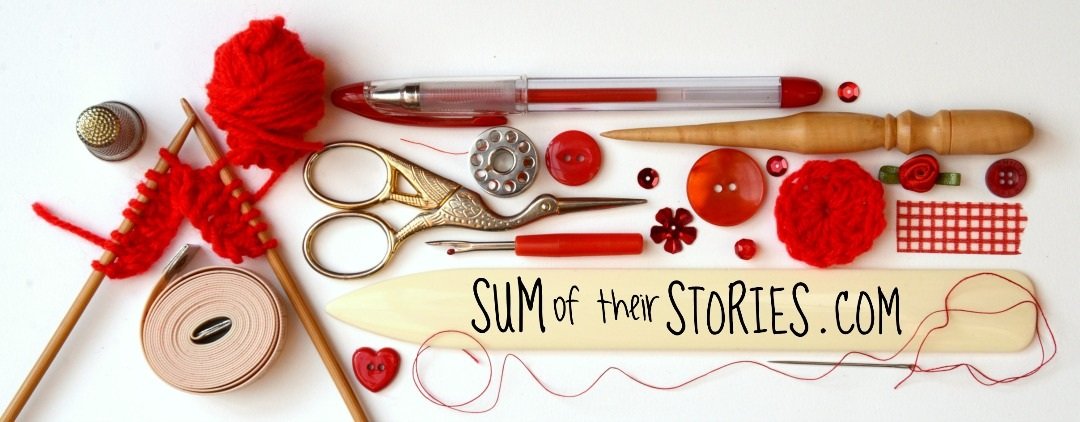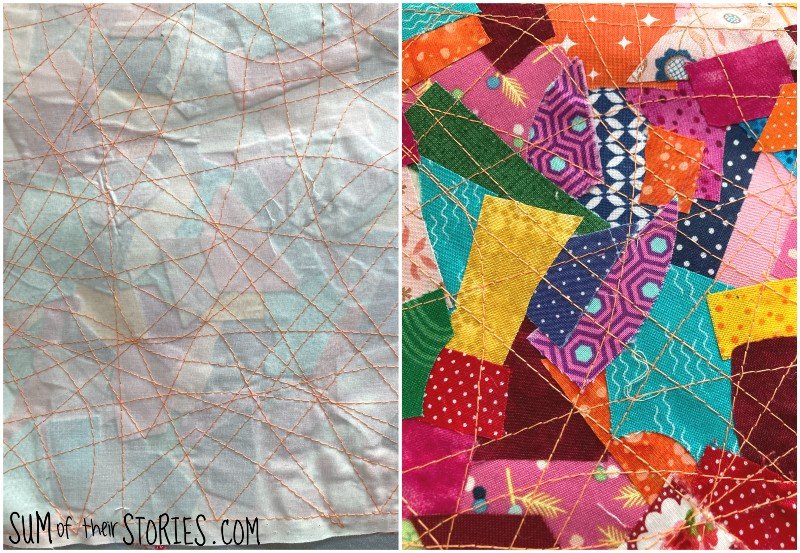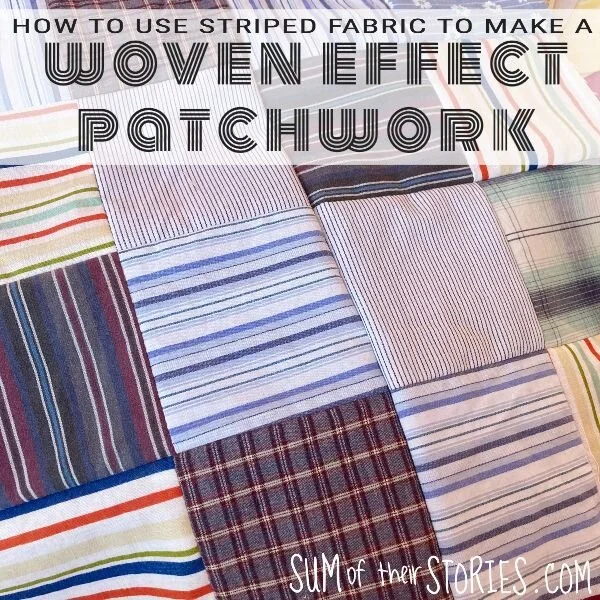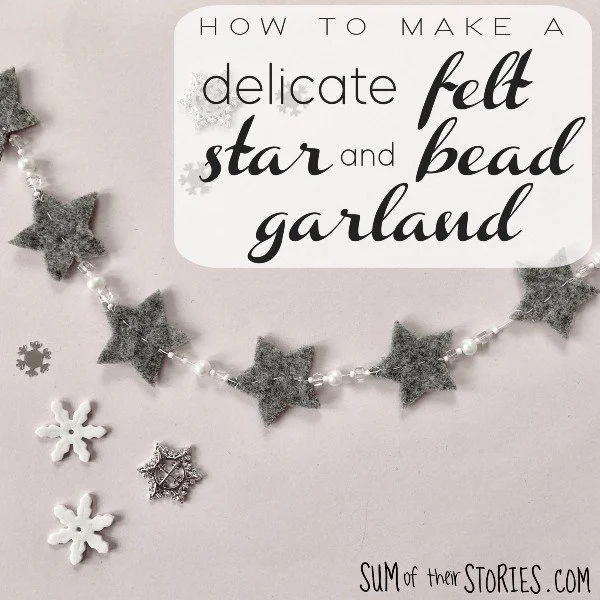How to make beautiful useable cloth from tiny fabric scraps
/If you sew you will probably know the dilemma of what to do with those teeny tiny off cuts of fabric that every sewing project creates. Small pieces can be used for smaller projects and patchwork, really small pieces are perfect for crumb quilts but what about those really teeny tiny bits? You can throw them away or use them for stuffing OR you can use them to make new gorgeous fabric that can then be used for all sorts of different projects.
I’ve used some of these teeny tiny scraps to make some lovely new fabric, let me show you how.
How to make new cloth from tiny fabric scraps and offcuts
To make new useable cloth from your tiniest fabric offcuts and scraps you need some iron on or fusible interfacing. Iron on interfacing and fusible interfacing are just two ways of saying the exact same thing. Your interfacing can be any weight and any size so this is also a great way to use up your scraps and offcuts of interfacing.
I had a few pieces of old spare leftover interfacing but I also put a shout out to a couple of my craft blogging friends. I have the BEST friends, because, what do you know, just a few days later a jiffy bag arrived in the post stuffed with more gorgeous tiny bits of fabric and interfacing.
I’ve got 2 different methods to make this pretty new useable patchwork cloth depending on what kind of interfacing and fabric scraps you have.
Method 1:
Making New Fabric with Pieces of Fusible Interfacing
This method is for when you have sizeable pieces of fusible interfacing. It doesn’t matter at all if your interfacing is light, medium or heavy weight.
You’ll need : pieces of fusible interfacing, fabric scraps, an iron and ironing board, sewing machine and thread
Lay the interfacing on your ironing board or ironing mat with the dotty, bumpy, glue side up. You can see from these pictures I’ve made several pieces of fabric with interfacing in different sizes and shapes.
Take your tiny fabric pieces and arrange them all over the interfacing. Overlap the pieces a little and make sure there are no gaps. This is important as any gaps will stick to your iron and you’ll end up in a hot mess. Play around with the pieces and when you are happy use your iron to secure them down. Use your iron in a pressing down motion rather than gliding it along, that way you’ll secure the scraps without moving them.
Obviously any edges where the fabric scraps are overlapping will not be stuck down but they should be secure enough so they are not moving or flapping too much.
Take your piece of patchwork-y fabric to the sewing machine and start stitching. Stitch all over, in many different directions. If you have a freemotion foot and feel confident then freemotion stitch to your heart’s content. If not then just going back on forth, criss-crossing the whole piece is fine too, that’s what I did.
This uses quite a lot of thread so this is a great chance to use any older or left over threads. I’ve inherited and been given threads in the past when I’ve not known how old they are. Old thread can lose its integrity and may snap more easily, not something you want on the seam of a garment, but not so much of an issue on a piece like this. Depending on the colours of your fabric scraps you might be able to use up odd bits of thread in colours you don’t normally use too.
Just keep stitching in all directions until your fabric scraps are covered and completely secure.
This is what it looks like on the front and on the back. Isn’t it pretty?
Method 2:
Making new cloth with off cuts of fabric already backed with Bondaweb or double sided fusible interfacing
This method is for you if you have lots of off cuts and tiny pieces left over from applique or quilt making where your scraps are already backed with something like bondaweb or another type of double sided sticky interfacing. These were the pieces my friend sent to me, she had obviously applied bondaweb to small pieces of fabric then cut out shapes for applique and these were the leftovers.
You’ll need : fabric scraps already backed with bondaweb (or similar), a piece of unwanted fabric, an iron and ironing board, sewing machine and thread
This time you are going to attach your fabric pieces onto a base fabric. This base fabric can be pretty much anything that you don’t want for something else. Mine was a piece of old bed sheet. The only restriction is that you must be able to iron on it, so I guess nothing that will melt, other than that anything goes!
Lay your base fabric out on your iron board or ironing mat then arrange your tiny fabric pieces all over as before, peeling off any backing paper as you go. I’d still overlap the pieces a little and make sure there are no gaps but this time that is just for aesthetic purposes and there is no danger of the sticky side transfering to your iron. Then use your iron to secure them down. Again, use your iron in a pressing down motion rather than gliding it along to avoid shifting the pieces out of place.
Exactly the same as last time, you now just want to stitch all over in every direction possible. Use all one colour thread or mix it up as you use up oddments and left overs. Have fun, it’s very soothing to sew when you don’t have to worry about seam allowance, or keeping things straight.
That’s it, simple as that and you have created some beautiful, crazy looking patchwork fabric ready to be turned into something lovely.
I’ve starting making things with my new scrap fabric, first up is these hanging heart ornaments.
I’ve experimented with a slight tweak on this idea to use fabric crumbs and made tote bags too, you can find the full tutorials to make them here - scrap fabric tote bag version 1 and scrap fabric tote bag version 2.
Julie
I’ll be sharing this idea at some of these link ups
























